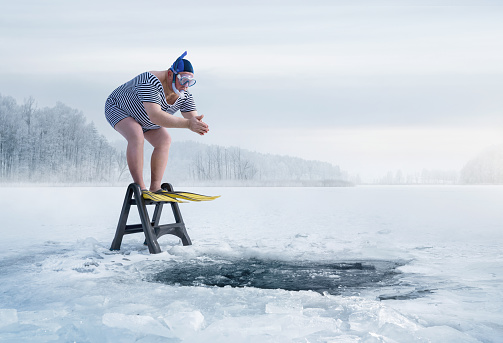General Rules of Playing Water Skiing
Ready to embark on a thrilling adventure on the water? Water skiing offers an exhilarating experience that combines the excitement of speed with the beauty of gliding across the water’s surface.
But before you jump into this exciting sport, it’s crucial to familiarize yourself with the general rules that will ensure your safety and make your water skiing journey enjoyable.
First and foremost, safety should always be your top priority. Before hitting the water, make sure to wear the necessary safety gear, including a properly fitting life jacket and a helmet. These items will provide you with the protection you need in case of any unexpected falls or accidents.

Communication is key when participating in any water sport, and water skiing is no exception. It’s essential to establish clear and effective communication with your fellow skiers and the boat driver. One common method is using hand signals to indicate your intentions, such as when you’re ready to start skiing, slowing down, or signaling a turn. This ensures everyone is on the same page and reduces the risk of collisions or misunderstandings.
Maintaining control is crucial while water skiing. Always remember to keep a firm grip on the handle and avoid excessive leaning or leaning back, as this can throw off your balance. Additionally, it’s important to stay aware of your surroundings and be mindful of other boats or obstacles in the water. By staying alert and in control, you can navigate the water with confidence and minimize the chances of accidents.
Water skiing offers a sense of freedom and excitement that is hard to match. By following these general rules, you can ensure a safe and enjoyable experience that will keep you coming back for more. So grab your gear, hop on that boat, and get ready to feel the rush of adrenaline as you glide effortlessly across the water’s surface.
Safety Gear
To ensure your safety while water skiing, it’s essential to wear the proper safety gear. The two most important pieces of equipment you need are a life jacket and water shoes.
First and foremost, a life jacket is absolutely crucial for your safety on the water. It provides buoyancy and keeps you afloat in case of a fall or accident. It should fit snugly, yet comfortably, and be Coast Guard approved. Remember, accidents can happen at any time, so wearing a life jacket is non-negotiable.
Another important piece of safety gear is water shoes. These specialized shoes are designed to provide traction and protect your feet while skiing. They’ve slip-resistant soles that prevent you from slipping on the wet surface of the skis or the boat deck. Additionally, they offer protection against sharp objects that may be lurking beneath the water’s surface, such as rocks or debris. Water shoes also help to keep your feet warm in colder water temperatures.
When selecting water shoes, choose a pair that fits well and offers good ankle support. They should be made of quick-drying materials to prevent discomfort and blisters. Furthermore, opt for shoes with adjustable straps or laces to ensure a secure fit.
Equipment Check
Before you hit the water, it’s important to conduct an equipment check to ensure everything is in proper working order. This step is crucial for your safety and enjoyment while water skiing. Here are some key things to check before you embark on your exhilarating adventure:
-
Buoyancy Aids: Always check your buoyancy aids, such as life jackets or floatation devices, to ensure they’re in good condition and properly fitted. Make sure they’re securely fastened and provide the right amount of buoyancy for your weight. Remember, safety should always be a priority when it comes to water sports.
-
Foot Position: Your foot position is essential for maintaining balance and control while water skiing. Ensure that your bindings are properly adjusted to fit your feet snugly. Loose or ill-fitting bindings can lead to accidents or injuries. Take the time to check that they’re secure and comfortable before hitting the water.
-
Equipment Functionality: Check the overall functionality of your equipment, such as skis, ropes, and handles. Inspect for any signs of wear and tear, such as frayed ropes or damaged skis. Test the release mechanisms on your bindings to ensure they’re in proper working order. It’s also important to check that the tow rope is free from knots or tangles.
By conducting a thorough equipment check, you can ensure that everything is in proper working order before you start water skiing. Taking the time to inspect your buoyancy aids, foot position, and equipment functionality won’t only enhance your safety but also contribute to a more enjoyable and carefree experience on the water.
Warm-Up Exercises
To ensure a safe and successful water skiing session, it’s essential to warm up your body with specific exercises. Preparing your muscles and joints will help prevent injuries and improve your performance on the water.
Incorporate exercises that target your core, legs, and arms to enhance your stability and strength during skiing.
Essential Warm-Up Exercises
Start your water skiing session off right with some essential warm-up exercises. It’s important to prepare your body for the intense physical activity ahead. Here are three key warm-up exercises that will help you get ready for the excitement on the water:
-
Dynamic stretching: Engage in movements that mimic the motions you’ll be performing during water skiing. This will help loosen up your muscles and increase your range of motion.
-
Cooling down techniques: After your warm-up, it’s equally important to cool down properly. Incorporate exercises such as gentle stretching and walking to gradually bring your heart rate down and prevent muscle soreness.
-
Breathing exercises: Deep breathing exercises can help you relax and focus your mind before hitting the water. Take slow, deep breaths to calm your nervous system and enhance your overall performance.
Preparing Your Body
To properly prepare your body for water skiing, incorporate essential warm-up exercises into your routine.
A stretching routine before hitting the water is crucial to prevent injuries and enhance performance. Start by stretching your calves, hamstrings, quadriceps, and hip flexors. Hold each stretch for about 30 seconds and repeat on both sides.
Additionally, incorporate dynamic stretches such as arm swings and leg swings to warm up your muscles and increase flexibility.
Remember to stay hydrated before, during, and after water skiing. Dehydration can affect your performance and increase the risk of cramps and fatigue. Drink water or sports drinks regularly and avoid alcohol or caffeinated beverages, as they can dehydrate you.
Follow these warm-up exercises and hydration tips to ensure a safe and enjoyable water skiing experience.
Injury Prevention Techniques
Incorporate warm-up exercises to prevent injuries and enhance performance when preparing for water skiing. Here are some essential warm-up techniques to help you stay safe and enjoy your time on the water:
-
Dynamic stretching: Engage in movements that mimic the actions of water skiing, such as leg swings, arm circles, and trunk rotations. This will increase blood flow and warm up your muscles.
-
Cardiovascular exercise: Take a brisk walk or jog to elevate your heart rate and increase circulation before hitting the water. This will prepare your body for the demands of water skiing.
-
Balance and stability exercises: Practice standing on one leg or using a balance board to improve your body’s stability and reduce the risk of falls.
By incorporating these warm-up exercises into your routine, you can significantly reduce the chances of accidents and common injuries associated with water skiing.
Stay safe and have fun out there!
Proper Body Position
Get into the correct body position for water skiing by bending your knees and leaning forward. Proper body alignment is essential for maintaining balance and stability while skiing. Start by aligning your body with the direction of the boat. Keep your feet shoulder-width apart and your knees slightly bent. This position allows you to absorb the impact of the waves and maintain control over your movements.
To distribute your weight evenly, lean forward from your hips while keeping your back straight. This will help you maintain a low center of gravity and prevent you from falling backward. Distributing your weight correctly is crucial for maintaining stability and preventing accidents.
As you start skiing, keep your arms extended in front of you, slightly bent at the elbows. This will help you maintain balance and control over your movements. Avoid locking your elbows or pulling them too far back, as this can throw off your body alignment.
Remember to relax your body and go with the flow of the water. Tension in your muscles can hinder your performance and make it harder to maintain balance. Let your body respond naturally to the movements of the boat and the water.
By maintaining proper body alignment and distributing your weight effectively, you’ll be able to enjoy the freedom of water skiing to its fullest. Practice these techniques regularly to improve your skills and enhance your overall experience on the water.
Communication Signals
When it comes to water skiing, clear communication is crucial for a safe and enjoyable experience.
Non-verbal hand signals play a vital role in conveying messages between the skier and the boat driver. These signals help indicate when to speed up, slow down, turn, or stop, ensuring smooth coordination and preventing accidents.
It’s important to establish and understand these signals before hitting the water to ensure effective communication throughout the entire skiing session.
Non-Verbal Hand Signals
You can effectively communicate with your water skiing team using non-verbal hand signals. Hand gestures are an essential part of communication etiquette in water skiing, allowing you to convey important messages without the need for verbal communication. These signals are especially crucial in situations where noise and distance can make it difficult to hear or understand each other.
Here are three sub-lists of non-verbal hand signals that will help you effectively communicate with your team:
- Stop: Extend your arm straight out with your palm facing forward.
- Speed up: Make a circular motion with your hand in the air.
- Slow down: Move your hand up and down in a waving motion.
Importance of Clear Communication
Ensure smooth coordination and enhance the freedom and enjoyment of your water skiing experience by utilizing clear and effective communication signals. Clear instructions and effective teamwork are crucial for a successful water skiing session. Communication signals allow skiers and boat operators to stay connected and make quick decisions, ensuring everyone’s safety and enjoyment on the water.
Here is a table illustrating some common communication signals used in water skiing:
| Signal | Meaning |
|---|---|
| Thumbs up | Speed up |
| Thumbs down | Slow down |
| Hand waving | Stop |
| Tapping head | Turn left |
| Tapping shoulder | Turn right |
Boat Speed and Distance
Maintain a consistent boat speed and distance while water skiing to ensure a safe and enjoyable experience. When it comes to boat speed, there are a few key points to keep in mind:
-
Find the right speed: The boat speed should be determined based on the skier’s skill level and the water conditions. Beginners usually start around 20-25 mph, while more advanced skiers can handle speeds of 30-36 mph. Adjust the speed accordingly to match the skier’s comfort and ability.
-
Stay consistent: Once you find the ideal speed, it’s vital to maintain it throughout the ride. Sudden changes in boat speed can disrupt the skier’s balance and cause unnecessary falls. Ensure the boat driver is skilled and able to keep a steady pace.
-
Consider the water conditions: The condition of the water can greatly impact the boat speed. Calm and glassy waters allow for higher speeds, while rougher waters may require slowing down. Be aware of any obstacles or hazards in the water that could affect the skier’s safety.
Maintaining a proper distance between the boat and the skier is equally important:
-
Keep a safe distance: The recommended distance between the boat and the skier is around 75-100 feet. This distance allows the skier to have enough room to maneuver without getting too close to the boat’s propeller or wake.
-
Avoid excessive slack: While some slack in the rope is necessary for the skier to make turns, too much slack can be dangerous. Excessive slack can cause the skier to lose control and potentially collide with the boat or other objects in the water.
-
Communicate with the boat driver: Effective communication between the skier and the boat driver is essential for maintaining the right distance. Use hand signals or a communication system to indicate any necessary adjustments in speed or distance.
Navigation Rules
When it comes to navigating the waters while water skiing, it’s important to follow safety guidelines and understand right of way rules.
These rules are in place to ensure the safety of all water skiers and boaters on the water.
Safety Guidelines for Navigation
To navigate safely while water skiing, always follow the rules of navigation. Here are some safety guidelines to ensure a smooth and enjoyable experience on the water:
-
Stay aware of water conditions: Keep an eye out for any changes in water conditions, such as waves, currents, or obstacles that could pose a risk to your safety.
-
Maintain a safe distance: Maintain a safe distance from other boats, skiers, and any objects in the water. This will help prevent collisions and accidents.
-
Observe right-of-way rules: Familiarize yourself with the right-of-way rules and always yield to other boats or skiers when necessary.
By adhering to these safety guidelines and being aware of your surroundings, you can navigate the waters with confidence and freedom, ensuring a fun and safe water skiing experience.
Stay safe and enjoy the thrill of the ride!
Right of Way Rules
By observing right-of-way rules, you can ensure safe navigation while water skiing. These rules are essential for maintaining a smooth and enjoyable experience on the water.
When approaching other skiers or boats, it’s important to understand who’s the right of way. The key principle is to yield to others whenever necessary to prevent accidents or collisions. Always be aware of your surroundings and maintain a safe distance from other skiers and boats.
Additionally, it’s crucial to wear proper safety gear, such as a life jacket, to protect yourself in case of any mishaps.
Following the right-of-way rules and wearing the necessary safety gear won’t only keep you safe but also contribute to the overall freedom and enjoyment of water skiing.
Weather Conditions
Before embarking on your water skiing adventure, it’s essential to consider the current weather conditions. The weather can greatly impact your experience on the water and your safety. Here are a few key factors to keep in mind when evaluating the weather conditions:
-
Wind: Check the wind speed and direction before heading out. Strong winds can make the water choppy and difficult to ski on. It can also affect your boat’s stability, making it harder for the driver to maintain a steady speed.
-
Rain: While a light drizzle may not pose much of a problem, heavy rain can reduce visibility and make it harder for the boat driver to see you. It’s best to avoid water skiing during heavy rainstorms.
-
Temperature: Take note of the temperature, especially if you plan to ski in colder conditions. Cold temperatures can make the water chilly, and it’s important to dress accordingly to stay warm and comfortable.
When it comes to water skiing, boat speed is another crucial factor to consider. The speed at which the boat is traveling determines the intensity of the skiing experience. Higher speeds provide a more exhilarating ride, while lower speeds are suitable for beginners or those who prefer a more relaxed pace. It’s important to communicate with the boat driver to ensure that the speed is set to your comfort level.
Respect for Others on the Water
Consider the safety and enjoyment of fellow water enthusiasts by practicing respect for others on the water while water skiing. Water skiing etiquette plays a crucial role in ensuring a positive and harmonious experience for everyone sharing the water. By adhering to these principles, you can help maintain a friendly and cooperative atmosphere while enjoying the freedom of water skiing.
First and foremost, always be aware of your surroundings and the presence of other skiers, boats, and swimmers. Keep a safe distance from others to avoid collisions and potential accidents. It’s essential to communicate with hand signals or designated gestures to indicate your intentions, such as starting, stopping, or changing direction. Clear communication ensures that others on the water can anticipate your movements and react accordingly.
Sharing the water is a fundamental aspect of water skiing etiquette. Be mindful of other skiers and give them ample space to navigate and perform their maneuvers. Avoid crossing another skier’s path, as it can disrupt their flow and pose a safety risk. Additionally, when passing other boats or individuals in the water, maintain a respectful distance to prevent any accidents or disturbances.
Respecting others’ right of way is another essential aspect of water skiing etiquette. Yield to skiers who are already in motion or those who are approaching from your right-hand side. This practice ensures a smooth and uninterrupted skiing experience for everyone involved.
Emergency Procedures
To ensure the safety of yourself and others on the water while water skiing, it’s important to be familiar with emergency procedures. Accidents can happen, and it’s crucial to know how to respond quickly and effectively. Here are some essential emergency response and first aid procedures to keep in mind:
-
Stay calm: In any emergency situation, it’s important to stay calm and composed. Panicking can make the situation worse and hinder your ability to make rational decisions.
-
Assess the situation: Before taking any action, assess the situation and determine the severity of the emergency. This will help you prioritize your response and provide the necessary help.
-
Call for help: If the situation requires immediate assistance, don’t hesitate to call for help. Whether it’s contacting emergency services or alerting nearby boats, getting professional help can be crucial in saving lives.
-
Provide first aid: If someone is injured, it’s important to know basic first aid procedures. This includes CPR, treating wounds, and stabilizing fractures. Taking a first aid course can greatly enhance your skills and confidence in handling emergencies.
-
Use safety equipment: Always have life jackets and other safety equipment readily available. In an emergency, these tools can make a significant difference in ensuring everyone’s safety.
-
Communicate with others: Effective communication is key during emergencies. Make sure to communicate clearly and concisely with others involved, providing necessary instructions and updates.
Frequently Asked Questions
Can I Wear My Regular Swimwear While Water Skiing or Do I Need to Wear a Specific Type of Gear?
Don’t dive in without the right attire!
When it comes to water skiing, you’ll want to wear specific gear for maximum comfort and safety.
While you might be tempted to wear your regular swimwear, it’s recommended to opt for specialized water skiing swimwear.
These garments are designed to withstand the water’s force and provide better mobility.
How Often Should I Check My Water Skiing Equipment for Any Damages or Wear and Tear?
To ensure your safety and the optimal performance of your water skiing equipment, it’s essential to regularly check for any damages or wear and tear. The frequency of these checks depends on how often you go water skiing, but a general rule of thumb is to inspect your gear before every session.
Remember to check your skis, bindings, ropes, and life jacket for any signs of damage.
Always wear the recommended gear for water skiing to maximize your enjoyment and minimize the risk of injury.
Are There Any Specific Warm-Up Exercises That Are Recommended for Water Skiing?
Before hitting the water, it’s crucial to warm up with specific exercises. These warm-up routines can greatly benefit your water skiing experience.
Incorporating exercises like jumping jacks, lunges, and arm swings will help loosen your muscles and increase blood flow. This will enhance your flexibility, prevent injuries, and improve performance on the water.
What Are Some Common Mistakes to Avoid in Maintaining the Proper Body Position While Water Skiing?
When water skiing, it’s important to avoid common mistakes in maintaining the proper body position. One mistake is leaning back too far, which can cause you to lose balance and fall.
Another mistake isn’t keeping your knees bent, which can make it harder to control the skis.
To avoid these errors, make sure to wear the proper gear, like a life jacket and water ski gloves, to enhance your performance and keep you safe on the water.
How Can I Effectively Communicate With the Boat Driver While Water Skiing?
To effectively communicate with the boat driver while water skiing, follow these safety precautions.
Use hand signals to indicate your speed preference – thumbs up for faster, thumbs down for slower.
Make eye contact with the driver before starting and stopping.
If you need to stop, raise your hand palm out and make a cutting motion across your throat.
Clear communication ensures a smooth ride and keeps everyone safe on the water.






